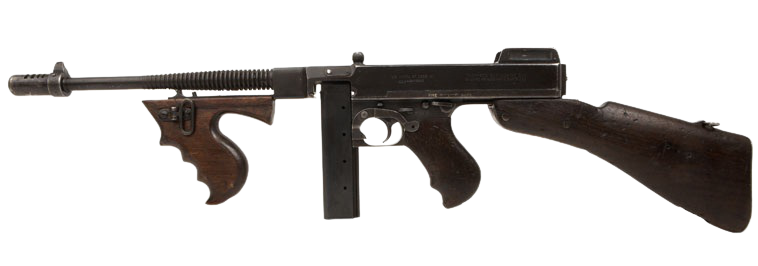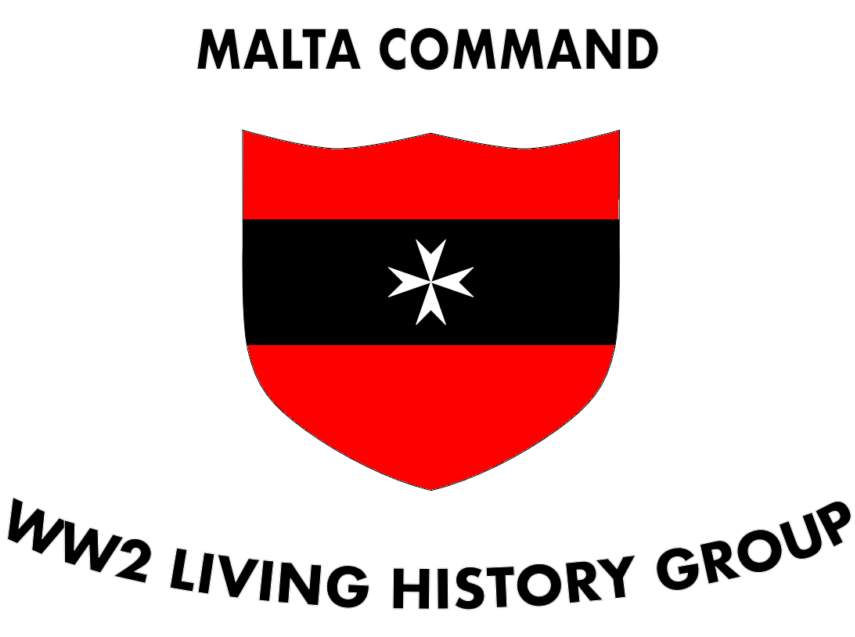Below you’ll find a list of the most common weaponry used by the British forces in Malta during the war, particularly the KOMR. One should always keep in mind that, due to shortages in supplies and to the war at it’s peak on all fronts, Malta was pretty low on the issue list and therefore certain equipment such as the Sten or the No.4 Lee Enfield were issued quite some time after the battle for Malta was over.
Lee – Enfield SMLE No1 Mk3 &Mk3*
The SMLE (Short, Magazine, Lee, Enfield) comes in two sub varieties with minor construction differences. Over three million rifles were made to be used in both world wars, some armies keeping it in service well into the 60s. During WW2 in fact, SMLE rifles used in Malta, were from the 1914 – 1918 period. Soldiers were trained to fire at a rate of 12 aimed shots per minute. The SMLE was a legend in its own time, utterly reliable and with the smoothest bolt action ever made, many men preferred this rifle to it’s replacement the No.4.
Calibre: | .303 British | Barrel: | 25.2 inches |
Weight: | 44.5 inches | Rifling: | 5 grooves |
Length: | 3.96 kilograms | Magazine: | 10 rounds |
Production: | 1907-1943 |

Webley MkIV and Enfield No2 Mk1
After WW1 the British Army decided to adopt a .38 revolver, easier for trainees to master. Provided wit a 200 grain bullet it promised sufficient stopping power, in fact it was found to be equal to the .455 round. Webley produced a design, but one from RSAF Enfield was selected. Both revolvers were identical, having just a few parts of the mechanism different. The Enfield revolver came in two variants; the Mk1 had a conventional spur on the hammer which was found to be inconvenient for crews in vehicles, therefore the Mk1* was created, this having the spur removed. The Webley MkIV was initially sold commercially, but at the outbreak of WW2 about 100,000 were taken into service and used well into the 50s.
Calibre: | .38 British | Barrel: | 5 inches |
Length: | 10.23 inches | Rifling: | 7 grooves |
Weight: | 780 grams | Magazine: | Drum - 6 rounds |
Production: | 1931-1955 |
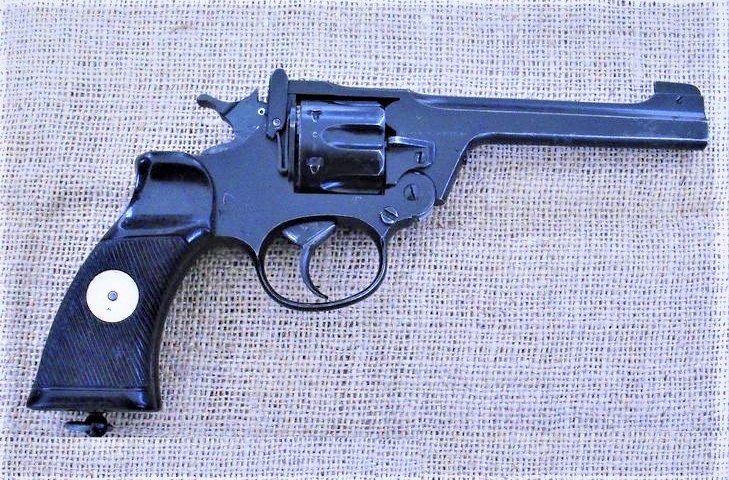
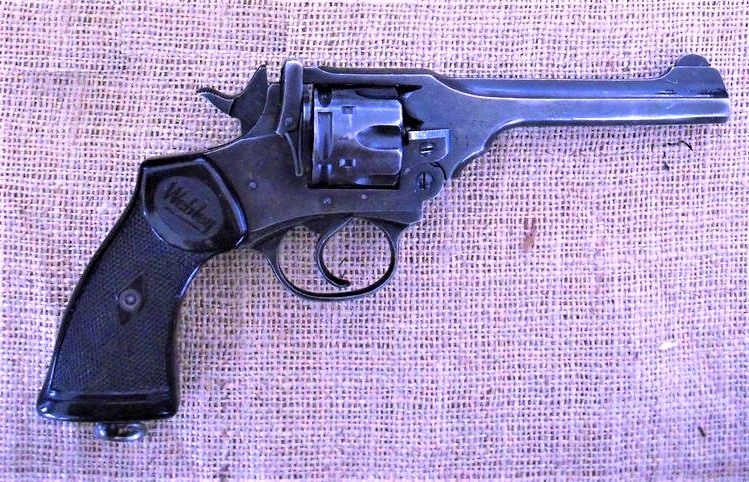
Bren Light Machinegun (LMG )
Britain adopted this machinegun from Czechoslovakia, where it was known as the VZ26. The Bren (name deriving from BRno and ENfield) version differs because the British .303 cartridge was rimmed, thus resulting in the characteristic curved magazine. Very reliable, accurate, slow firing; the Bren was probably the best light machine gun of the WW2 period, and changed to 7.62 calibre is still in use today. There area number of variant models differing in the type of sights, length of barreland bipod.
Bren LMGs had a dual role tripod. Mounted low, it would be used in aninfantry role, for firing from a static defence position, whereas mountedupright the tripod could be used for firing the Bren in an anti aircraft role.
Calibre: | .303 British | Barrel: | 25 inches |
Length: | 45.27 inches | Rifling: | 6 grooves |
Weight: | 10.15 kilograms | Magazine: | 30 rounds |
Production: | 1936-2006 | Rate of Firing: | 500 rounds/minute |
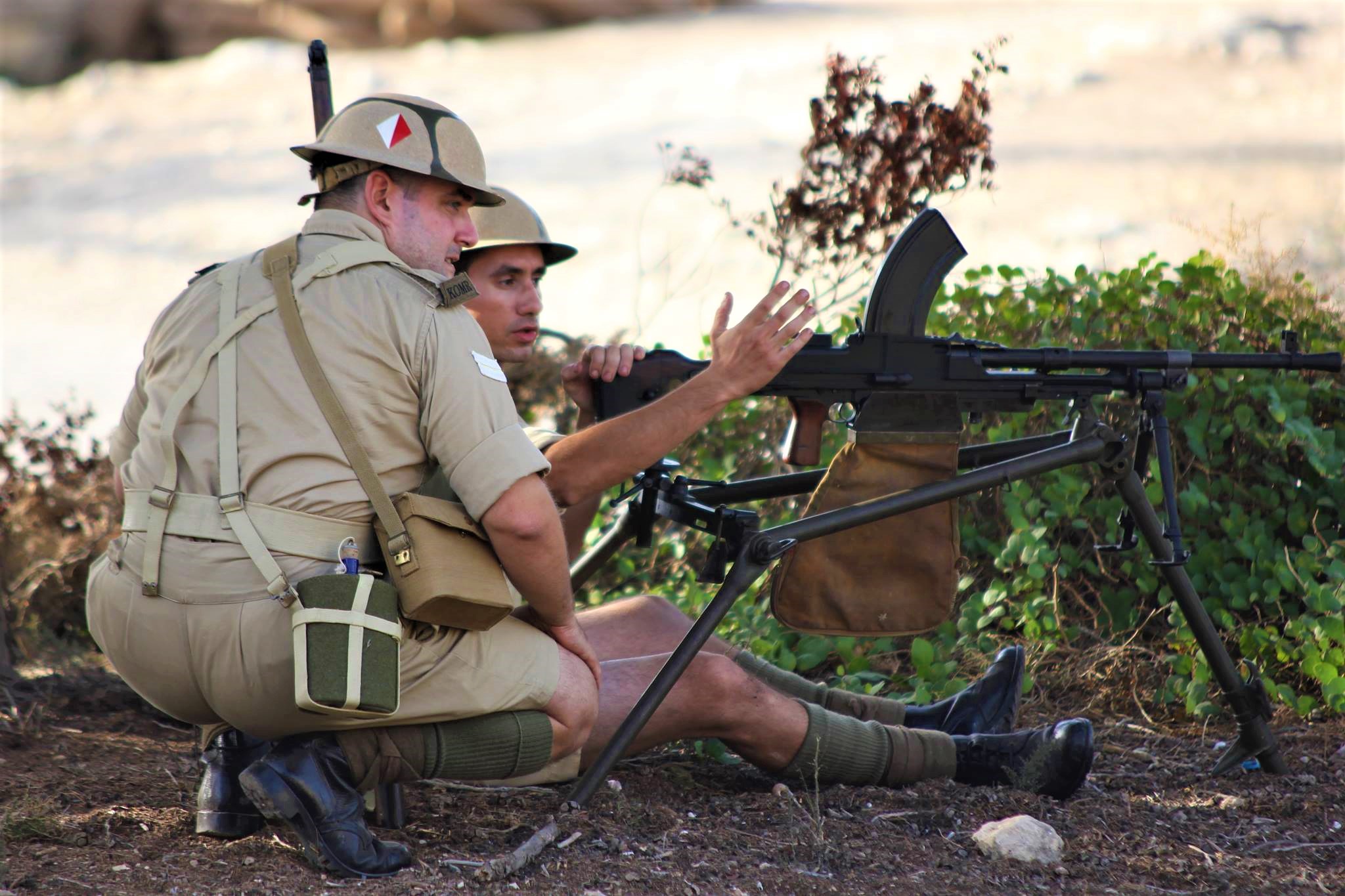
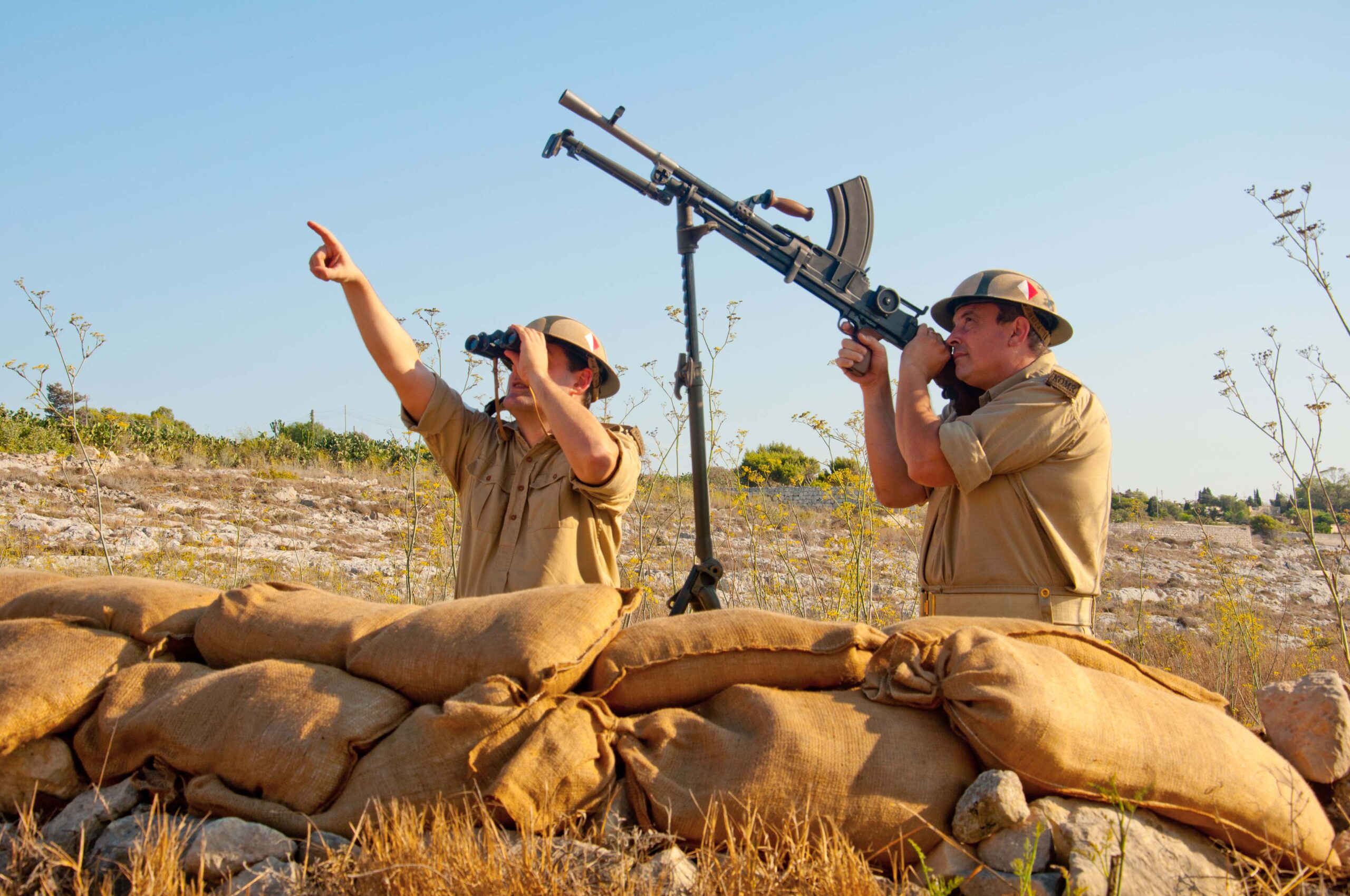
Thompson M1928 & M1928A1 SMG (Sub-machinegun)
The Thompson sub-machine gun was designed in the 1920s in the USA. It took the .45″ ACP ammunition, the same as that used in the Colt 1911 pistol. There were 2 major versions which saw service during the war; the M1928 and the M1 (with their variants). The M1 type (the M1A1 being the most popular) was used by the US Army and rarely ever used by the British.
The M1928 Thompson used a 20 round box magazine, or 50 round drum magazine. Later in the war, 30 rd magazines were introduced. The gun was a masterpiece of engineering. It had cooling fins on the barrel, a Cutts Compensator and could also be fitted with a front pistol grip to help with stability. The 1928A1 version had a simplified Lymann rear sight and did away with the pistol grip.
The KOMR was trained in using the M1928 and M1928A1 versions and they do occasionally appear in wartime photos but it was probably only issued in very limited numbers.
Calibre: | .45 ACP | Barrel: | 10.5 inches |
Length: | 33.74 inches | Rifling: | 6 grooves |
Weight: | 4.9 kilograms | Magazine: | 20 to 50 rounds |
Production: | 1921-1942 | Rate fo fire: | 600+ rounds/minute |

